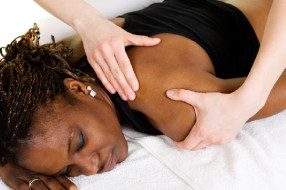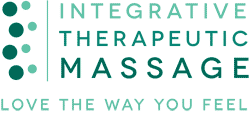Mary's Blog
Schedule An Appointment Here Or Call 773-230-4742
If requesting a same day appointment under a 3-hour window, please call for availability.« back to all blogs
Massage is More than a Luxury: It's Medicine
"There is emerging evidence that [massage] can make contributions in treating things like pain, where conventional medicine doesn't have all the answers," Jack Killen, deputy director, NCCAM.
 Who doesn't love massage! Sure, while a trip to the spa can be considered a luxury and an indulgence, many still don't realize that massage is much more than a "decadent treat". In recent years researchers have been on a mission to dispel these myths, and they are finding that in addition to making recipients feel good and less stressed, massage does have a wide range of very real health benefits.
Who doesn't love massage! Sure, while a trip to the spa can be considered a luxury and an indulgence, many still don't realize that massage is much more than a "decadent treat". In recent years researchers have been on a mission to dispel these myths, and they are finding that in addition to making recipients feel good and less stressed, massage does have a wide range of very real health benefits.Researchers have found that massage:
- Increases grip strength for those with carpal tunnel syndrome
- Aids in muscle recovery after exercising to exhaustion
- Helps maintain stable blood pressure
- Boosts the immune system in women fighting breast cancer
- Improves respiratory functioning in kids with asthma
- Helps premature babies gain weight
- Alleviates anxiety and depression
- Relieves stiffness and pain
Examples of current research demonstrating the health benefits of massage
Research published in 2011 studied 401 people with low back pain. Those who received one of two types of massage on a weekly basis had "less pain and disability" than those who didn't receive a massage at all. Some benefits remained more than nine months after the last session.
A 2006 study published in the Archives of Internal Medicine focused on the effects of massage on those with osteoarthritis of the knee. Those who received a full-body Swedish massage two times per week for four weeks and once a week for another four weeks reported less pain and stiffness, improved range of motion, and speed in walking a 50-foot path over those that did not receive a massage.
Another study monitored the sleep of fibromyalgia sufferers. After receiving three 30-minute massages three times per week, participants were able to sleep nearly an hour longer than at the start of the study.
Importantly, new research is beginning to provide an understanding as to the physiologic changes that occur in the body after a massage
For example, a study published The Journal of Alternative and Complementary Medicine in 2010 found that just one 45-minute session of deep-tissue Swedish massage resulted in decreased levels of the stress hormone cortisol in blood and saliva. Researchers also reported higher numbers of lymphocytes, the white blood cells making up the immune system, and lower numbers of cytokine proteins involved in inflammation and allergic reactions.
In fact, a review of research on stress reduction showed that massage lowers the stress hormone cortisol by an average of 31%. When cortisol levels go down, serotonin, a hormone that that helps to suppress pain perception, goes up. Following massage therapy, serotonin levels increase by an average of 28%.
In findings from a small Canadian study by researchers at McMaster University in Ontario, male students who received a 10-minute massage on one leg following 70 minutes of vigorous exercise on a stationary bike showed an increase in the number of mitochondria, the "power centers" of a cell. More mitochondria in cells means improved stamina during cardiovascular activities. In addition, the massage lowered the proteins associated with inflammation; inflammatory cells contribute to the muscle soreness experienced 24 to 48 hours after strenuous exercise. "With massage, you can have your cake and eat it too – massage can suppress inflammation and actually enhance cell recovery," said Dr. Mark Tarnopolsky, MD, PhD, professor in the department of pediatrics and medicine at McMaster University.
Research is being driven, in part, by the popularity of massage
According to a National Health Statistics report, roughly 8.3% of American adults used massage in 2007, compared to 5% in 2002. The increasing popularity of massage is evidenced by the fact that the National Center for Complementary and Alternative Medicine, part of the National Institutes of Health, upped spending on massage research from $1.5 million in 2002 to $2.7 million by 2012. The American Massage Therapy Association was forecasting massage to be a $10 billion to $11 billion industry in 2011.
It is hoped that the increasing volume of research will eventually translate into more insurance coverage for massage treatments. Currently, Washington is the only state requiring that insurance cover massage therapy. Some insurers (e.g., WellPoint) allow employers to purchase alternative medicine coverage as an add-on. Others, such as Aena, offer discounts on massage visits to practitioners who are part of their network.
How often should I get a massage?
For those interested in incorporating massage into their wellness program or healing plan, the question frequently arises:How often should I get a massage? Obviously, the answer varies for everyone depending on their goals, budget and scheduling availability. For those wishing to incorporate massage into their overall wellness program as a means to relax, bring relief to stiff and tired muscles, and help prevent muscle strain, a 60-minute session once a month is a nice baseline. (Of course, there's no harm coming in more frequently!)
However, for those with acute injuries or chronic soft tissue pain, more frequent sessions are advised. Depending on the severity and length of time the condition has existed, three to six (or possibly more) 30- to 60-minute sessions may be needed every five to seven days. Ideally, as the condition starts to heal, the length of time between sessions will decrease to where the monthly wellness or "maintenance" massage will do the trick.
References
Annals of Internal Medicine 10/2/07. Chou, R., et al. "Diagnosis and Treatment of Low Back Pain: A Joint Clinical Practice Guideline from the American College of Physicians and the American Pain Society." http://www.ncbi.nlm.nih.gov/pubmed/17909209
New York Times 9/20/10. Rabin, Roni Caryn. "Regimens: Massage Benefits Are More than Skin Deep." http://www.nytimes.com/2010/09/21/health/research/21regimens.html
New York Times 2/6/12. Bakalar, Nicholas. "How Massage Heals Sore Muscles." http://well.blogs.nytimes.com/2012/02/06/how-massage-heals-sore-muscles/
More.com 11/12. Jones, Judy. "Unexpected Medical Benefits of Massage."
Wall Street Journal 3/13/12. Petersen, Andrea. "Don't Call It Pampering: Massage Wants to be Medicine." http://online.wsj.com/article_email/SB10001424052702304537904577277303049173934-lMyQjAxMTAyMDEwMzExNDMyWj.html?mod=wsj_share_email





